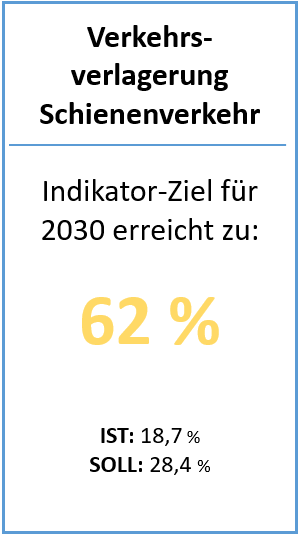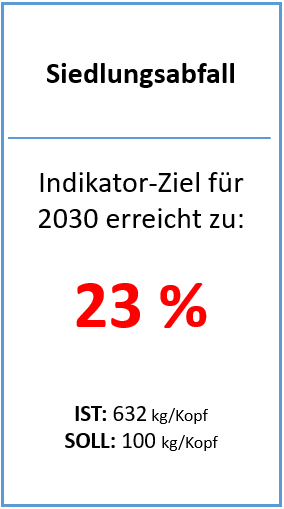Make cities and human settlements inclusive, safe, resilient and sustainable
SDG 11 includes the goal of reducing the per capita environmental impact of cities, in particular air quality. Similarly, urban development is to be made more inclusive and sustainable, including through participatory, integrated and sustainable settlement planning. It also aims to ensure universal access to safe and inclusive green spaces and public spaces, especially for women and children, the elderly, and people with disabilities. Similarly, access to safe and affordable housing and transportation systems should be ensured. Depending on which indicators are used to measure progress, the achievement of the goal of a more sustainable Germany by 2030 is assessed differently. The progress calculation of the official German Sustainability Strategy includes eight indicators. 2030Watch supplements these with four new indicators and modifies the target values of three official indicators.
Where does Germany stand in the implementation of SDG 11?
Percentage of SDG implementation:
Progress is calculated using the mean values of the indicators.
Official SDG monitoring
The German Sustainable Development Strategy comprises eight indicators and measures land consumption and density, energy consumption and housing costs. On this basis, the calculated progress is 20.6 percent.
Civil society SDG monitoring
2030Watch proposes an expanded list of indicators. The expanded indicator list includes the official indicators - three of which have had their target values modified - and four supplementary indicators to highlight the issues of particulate pollution, waste and modal shift. This results in progress of 34.6 percent.

















